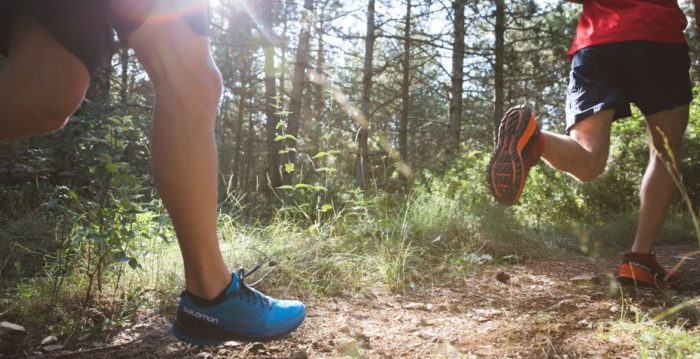Struggle with knee pain? Your shoes may be the problem
New research shows that shoes with a significant heel drop increase the stress on your knees

Knee injuries are some of the most common problems faced by runners, and new research says your shoes might have something to do with it. According to a recent study, shoes with a substantial heel drop (which most of us run in regularly) increase the amount of stress on your knees, which could lead to increased knee pain.

Heel drop and knee pain
Heel drop is the difference in height between the heel of your shoe and your forefoot. Traditional running shoes tend to have a larger heel drop, which may contribute to knee pain. The researchers in this study, published in the journal Gait and Posture, aimed to confirm this theory, and find out if zero-drop shoes helped prevent knee pain.
To do this, they had a group of 18 runners complete four separate running tests. They wore a different shoe each time, starting with a 15 mm drop, followed by a 10 mm drop, a 5 mm drop and no drop (zero-drop). During each run, the researchers collected running kinematics and ground reaction force data for each runner.
The researchers found that when the runners wore shoes with a 15 mm or 10 mm heel drop, their knee extension moment and patellofemoral joint force were greater than in shoes with zero drop, and their peak patellofemoral joint stress was increased by more than 15 per cent compared to shoes with zero drop. The runners’ knee flexion angle was also significantly increased when they wore shoes with a 15 mm, 10 mm or 5 mm drop.
In other words, when the runners wore shoes with a drop greater than 5 mm, they experienced a significant increase in joint stress in their knees.

The takeaways
Running shoes with large, cushy heels and significant heel drops have become the most popular shoe for their performance benefits, but they may increase your risk for knee injuries, particularly if you’re already prone to knee problems. The researchers of this study conclude that running shoes with a heel-to-toe drop of more than 5 mm are not recommended if you’re trying to prevent patellofemoral pain.
This doesn’t mean that runners who are prone to knee problems should never wear those cushy-heeled shoes, but you’re better off saving them for specific workouts and races, and running the rest of your miles in a shoe with a lower heel drop.
Of course, this is only one study with a relatively small number of participants, but if you’ve been wearing shoes with a large heel drop and you’re starting to experience knee pain, or if you’ve always struggled with knee problems and can’t figure out why, it may be worth finding a shoe that puts less stress on your knee joint.


